



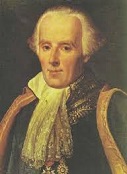




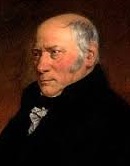
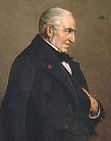





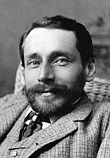

















TLW's Geologistscope™ (Geologist Historyscope) |
By T.L. Winslow (TLW), the Historyscoper™ |
© Copyright by T.L. Winslow. All Rights Reserved. |
Original Pub. Date: Jan. 9, 2017. Last Update: June 24, 2020. |

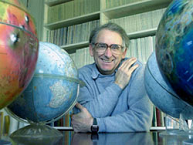
Westerners are not only known as history ignoramuses, but double dumbass history ignoramuses when it comes to geology and geologist history. Since I'm the one-and-only Historyscoper (tm), let me quickly bring you up to speed before you dive into my Master Historyscope.


In 1544 Bolognese physician-botanist Luca Ghini (1490-1556) creates the first known Herbarium (Hortus Siccus) in Pisa, gluing dried plants to cardboard; in 1554-8 he is succeeded by Italian physician-botanist Andrea Cesalpino (1519-1603), who is later called to be a prof. of medicine at the U. of Rome and physician to Pope Clement VIII, trying to figure out the circulation of the blood by explaining it as due to repeated evaporation and condensation, getting closer to the truth than anybody until William Harvey, pub. Quaestionum Peripateticarum in 1571; in 1593 he follows with Queaestionum Medicarum (2 vols.), which discusses the circulation of the blood but fails to form any clear picture. In 1596 he pub. De Metallicis (3 vols.) (Rome), a work on chemistry, mineralogy, and geology, showing a correct understanding of fossils, and anticipating some of the discoveries of Antoine Lavoisier and Rene Just Hauy.

In 1580 French Huguenot pottery maker Bernard (de) Palissy (1510-89) pub. Discours admirables, de la nature des eaux et fontaines, tant naturelles qu'artificielles, des metaux, des sels et salines, des pierres, des terres, du feu et des maux (Paris), which applies ancient Alexandrian principles of hydraulics, and incl. a theory of the origin of springs and underground waters, enunciating the modern theory of the origin of fossils.

In 1667 Danish scientist Steeno (Niels Steensen) (1638-87) of Copenhagen, who discovered the parotid salivary duct while studying anatomy in Amsterdam, then became court physician to grand duke Ferdinand II of Florence in 1665 publicly dissects a shark's head and proves that its mouth is full of teeth, not serpent tongues, then reveals that stones found in Malta are fossils of ancient shark teeth, founding the modern study of geology; he then advances the theory that land formations such as seabeds evolve via natural processes - living in the moment, priceless?

In 1696 English mathematician-theologian William Whiston (1667-1752) (student of Isaac Newton at Cambridge U.) pub. A New Theory of the Earth from its Original to the Consummation of All Things, which defends the Biblical account of Creation, with the soundbyte: "The Mosaic Creation is not a nice and philosophical account of the origin of all things; but a historical and true representation of the formation of our single Earth out of a confused Chaos, and of the successive and visible changes thereof each Day, till it became the habitation of mankind"; he claims that the Biblical Flood was caused by a comet hitting the Earth; too bad, he pushes Arianism, pissing-off most Christians, esp. Roman Catholics, but making fans of Isaac Newton and John Locke.

In 1776 Scottish geologist James Keir (1726-1820) suggests that rock formations such as Giant's Causeway in Ireland may have been caused by molten rock crystallizing as it cooled.

In 1783 taking advantage of the lengthening of human hair with humidity, Swiss geologist Horace-Benedict de Saussure (1740-99) invents the Hair Hygrometer, which is so reliable it is not replaced by an electrical version until the 1960s.

About 1783 English geologist (known for his black complexion) Rev. John Michell (1724-93) proposes the Cavendish Experiment to measure the gravitational constant, and first pub. the Schwarzschild Radius for a star, where gravity causes it become a "dark star" from which light cannot escape, later called a black hole; the experiment is performed in 1797-8 by British scientist Henry Cavendish.

In 1785 Scottish geologist James Hutton (1726-97) pub. Theory of the Earth; or An Investigation of the Laws Observable in the Composition, Dissolution, and Restoration of Land Upon the Globe, founding the modern science of geology with its presentation of the Bible-bashing principle of uniformitarianism, an Earth with "no vestige of a beginning - no prospect for an end"; too bad, it's too technical to obtain gen. acceptance until John Playfair popularizes it in 1802 - no end maybe, but it could have been created and had a beginning?
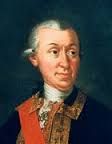
In 1786 Swiss mountaineer and French lt. gen. Franz Ludwig Pfyffer (1716-1802) constructs the first Relief Map, a 3-D model of the Lake Lucerne area after working on it for 24 years.

In Apr. 1796 Montbellard-born French naturalist ("Founding Father of Vertebrate Paleontology") Georges (Jean Leopold Nicolas Frederic) (Jean Léopold Nicolas Frédéric), Baron Cuvier (1769-1832) gives the lecture Mémoires sur les espèces d'éléphants vivants et fossiles at the Nat. Inst. (pub. in 1800), comparing skeletons of Indian and African elephants, and mastodons ("the Ohio animal"), which he concludes are all different species, the latter extinct; in 1806 he coins the name "mastodon"; he also describes a large skeleton found in Paraguay, which he names the Megatherium, claiming it is an extinct variety of the tree-dwelling sloth, ending the debate about whether extinction has actually happened, and founding Comparative Anatomy and Paleontology. In 1798 he pub. Tableau élémentaire de l'histoire naturelle des animaux, becoming the first attempt at systematic classification of the animal kingdom, founding modern Zoology (Comparative Anatomy), stressing how the parts of an organism are correlated to the functioning whole. In 1812 he pub. Recherches sur les Ossements Fossiles de Quadrupedes (Researches on Quadruped Fossil Bones), issuing his "rash dictum" that it is unlikely that any large animal remained undiscovered. In 1813 he pub. Essay on the Theory of the Earth; 2nd ed. 1815; 3rd ed. pub. 1817; 4th ed. pub. 1822; 5th ed. pub. 1827; advances the theory of catastrophism in geology, claiming that new species were created after periodic catastrophic floods after establishing the fact of past extinction; names the Pterodactyl and descries the aquatic Mosasauros, becoming one of the first to suggest that the Earth was once dominated by reptiles. In 1817 Cuvier pub. Le Règne Animal (The Animal Kingdom) (4 vols.), his magnum opus, a summation of his life's work on comparative anatomy, containing apparent support for evolutionary change for the extinct mammoths et al., making a fan of Charles Darwin, although Cuvier rejects the idea of evolution in favor of cyclical destruction-creation events via deluges; also makes fans of Richard Owen and Louis Agassiz.
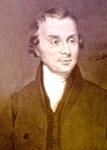
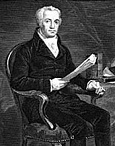

In the first decade of the 19th cent. Science makes great leaps in the concepts of Thematic Cartography, Statistical Graphing, and Data Visualization; coordinate paper is first used in pub. research (graph of barometric variations) by English industrial chemist Luke Howard (1772-1864), who makes comprehensive recordings of London weather in 1801-41. In 1801 the Pie Chart and Circle Graph is pub. London in "Statistical Breviary" by Scottish engineer-economist William Playfair (1759-1823), who in 1786 pub. "The Commercial and Political Atlas" in London, containing the first Bar Chart. In 1801 William "Strata" Smith (1769-1839) of England pub. "the map that changed the world", the first Geological Map (of England), founding the science of Stratigraphic Geology (Stratigraphy); too bad, the establishment ignores him, his work is plagiarized, and he ends up in debtors' prison.

In 1801 ("the Father of English Geology") William "Strata" Smith (1769-1839) of England pub. "the map that changed the world", the first Geological Map (of England), founding the science of Stratigraphic Geology (Stratigraphy); too bad, the establishment ignores him, his work is plagiarized, and he ends up in debtors' prison. In 1831 the Wollaston Medal, named after English chemist-physicist William Hyde Wollaston (1766-1828) (made of palladium, a metal he discovered) is founded by the Geological Society of London; the first one goes to William "Strata" Smith (1769-1839), whose pub. of the first geological map in 1801 causes pres. Adam Sedegwick to call him "the Father of English Geology".


In 1802 Jean d'Aubuisson de Voisins (1762-1841) and Christian Leopold von Buch (1774-1853), students of German geologist Abraham Gottlob Werner (1749-1817) reject their teacher's Neptunism (oceanic origin of rocks) in favor of the volcanic origin of basalt - you can't always give your kids what they love, but with Werner you can?


Might as well face it you're addicted to land? On Apr. 30, 1803 (Sat.) after the English refuse it, the 100M acre, $15M (15 cents an acre) Louisiana Purchase, negotiated by U.S. minister to France Robert R. Livingston, and surveyed by British-born Am. geologist George William Featherstonhaugh (1780-1866) extends the U.S. from the Mississippi to the crest of the Rockies and prepares it for further expansion to the Pacific; on Oct. 20 the U.S. Senate ratifies it, and on Dec. 20 ownership of the territory is formally transferred from France to the U.S. in ceremonies held in Jackson Square in New Orleans (originally Plaza d'Armas); the largest state to be purchased (4th largest of the 50 states) is Montana; French privateer Jean Lafitte (1776-1854) (d. 1823?) establishes his own Kingdom of Baritaria in the swamps and bayous around New Orleans, claiming to command 3K men; too bad, aborigines aren't told they have to register ownership of their lands, allowing the federal govt. to claim them, incl. the La. Bayou, where oil cos. later make billions.



On Nov. 19, 1822 the Chilean Earthquake of 1822 is experienced by Scottish writer (recent widow) Maria, Lady Callcott (1785-1842), whose description of large land areas rising from the sea is later used by Charles Lyell to support his theory that mountains are formed by volcanoes and earthquakes, and backed up by Charles Darwin when George Greenough tries to ridicule her on sexist lines. In 1830-3 Scottish geologist Sir Charles Lyell (1797-1875) pub. The Principles of Geology, which expounds and expands James Hutton's uniformitarian theory, trashes the Bible-based catastrophist position, and flips the ultimate bird at Jehovah by dividing the geological system into Eocene, Miocene, and Pliocene - plumbing is a mercurial mistress? In July 1837 30-y.-o. Swiss naturalist Louis Jean Rodolphe Agassiz (1807-73) shocks the Swiss Society of Natural Sciences in Neuchatel, abandoning his prepared lecture on Brazilian fossil fish and announcing his new theory that a vast "ocean of ice" had once covered all of Europe and N Asia as far as the Caspian Sea, based on an expedition the previous summer with older friend Jean de Charpentier, where they had found evidence that glaciers move, carrying rocks with them, incl. one incident where Agassiz is lowered into an Alpine glacier too far and almost freezes in meltwater; too bad, the other scientists scoff at any implication that the Biblical Flood doesn't explain all. In 1840 Agassiz pub. Studies of Glaciers (Etudes sur les Glaciers), explaining the role of glaciers in geological change, making a Biblical Flood unnecessary; in the fall noted Biblical Flood proponent Rev. William Buckland of Oxford debates with Agassiz at the annual meeting of the British Assoc. for the Advancement of Science in Edinburgh, and they end up going to Blackford Hill to the S to outpoint each other, and after Buckland gets the first points for an unstratified boulder, Agassiz takes him to a nearby cliff and points out hidden striations, indicating a moving glacier, and shouts "That is the work of ice", instantly converting him?; the scientific community remains unconvinced for a dozen years until the snow cover of Greenland is found to lie on top of a gigantic moving ice sheet, and the drift deposits on the Baltic coastline are explained by moving icebergs, giving scientists the rush of a new potential sciencescope; too bad, linguistic evidence of primitive cultures describing a universal flood also begins to be uncovered, so the battle rages on.

In 1828 Belgian pioneering geologist (devout Roman Catholic) Jean Baptiste Julien d'Omalius d'Halloy (1783-1875) pub. "Description géologique des Pays-Bas", followed by "Eléments de Géologie" (1831), "Introduction à la Géologie" (1833), "Coup d'oeil sur la géologie de la Belgique" (1842), "Precis elementaire de Géologie" (1843), "Abrégé de Géologie" (1853), and "Des Races humaines ou Eléments d' Ethnographie" (1845), which establishes a racial classification based on skin colour. In 1846 he pub. a paper expressing his opinion that new species have been produced by descent with modification instead of separate creation, earning kudos from Charles Darwin in his book "On the Origin of Species" (1861).

On Feb. 11, 1829 eccentric British amateur naturalist Francis Henry Egerton, 8th Earl of Bridgewater (b. 1756), known for giving dinner parties for dogs dies, leaving £8K to support a series of books "on the power, wisdom, and goodness of God, as manifested in the Creation", which become known as the Bridgewater Treatises; the first is by William Buckland (1784-1856), England's first official academic geologist (later dean of Westminster).


In 1835 Scottish geologist Sir Roderick Impey Murchison (1792-1871) and British geologist Adam Sedgwick (1785-1873) pub. On the Silurian and Cambrian Systems, Exhibiting the Order in which the Older Sedimentary Strata Succeed each other in England and Wales, which defines the succession of Paleozoic strata in Wales, with Murchison defining the Silurian system (1839), and Sedgwick (Charles Darwin's teacher) defining the Cambrian system, laying the foundation for the modern Geological Time Scale; in 1840 after the Great Devonian Controversey, Murchison discovers a new layer between the Silurian and Carboniferous, which he calls the Devonian system.
In 1836 New York State sponsors a natural history survey (ends 1842), which establishes U.S. geologists as a force; Maine sponsors a geologic survey (ends 1844).

In July 1837 30-y.-o. Swiss naturalist Louis Jean Rodolphe Agassiz (1807-73) shocks the Swiss Society of Natural Sciences in Neuchatel, abandoning his prepared lecture on Brazilian fossil fish and announcing his new theory that a vast "ocean of ice" had once covered all of Europe and N Asia as far as the Caspian Sea, based on an expedition the previous summer with older friend Jean de Charpentier, where they had found evidence that glaciers move, carrying rocks with them, incl. one incident where Agassiz is lowered into an Alpine glacier too far and almost freezes in meltwater; too bad, the other scientists scoff at any implication that the Biblical Flood doesn't explain all.

In Nov. 1863 Norwich, Conn.-born geologist-chemist Thomas Sterry Hunt (1826-92) pub. the article On the Earth's Climate in Paleozoic Times in Am. Journal of Science and Arts, building upon the greenhouse gas research of John Tyndall to propose that climate change in the Carboniferous Period was caused by CO2 and that it continues to modern times; too bad, he believes that atmospheric CO2 in the past was of cosmic not volcanic origin; "Now we have only to bear in mind that there are the best of reasons for believing that during the earlier geological periods all of the carbon since deposited in the forms of limestone and of mineral coal existed in the atmosphere in the state of carbonic acid, and we see at once an agency which must have aided greatly to produce the elevated temperature that prevailed at the earth's surface in former geological periods."
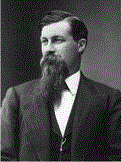
In 1877 after being appointed chief geologist for the Wisc. Geological Survey in 1876, Mattoon, Ill.-born geologist Thomas Chrowder "T.C." Chamberlin (1843-1928) pub. Geology of Wisconsin (4 vols.), making him a nat. star and getting him appointed head of the glacial div. of the U.S. Geological Survey in 1881. In 1883 he pub. Preliminary Paper on the Terminal Moraine of the Second Glacial Epoch. In 1887-92 he becomes pres. of the U. of Wisc.; in 1892 he moves to the new U. of Chicago to found its geology dept. In 1904 he and Rollin D. Salisbury (1858-1922) pub. Contribution to the Theory of Glacial Motion. In 1909 he pub. A College Text-Book of Geology, followed by Part II Historical Geology in 1927; also Introductory Geology: A Text-Book for Colleges in 1921.

In 1883 Canadian geologist George Mercer Dawson (1849-1901) explores the Canadian Rockies, discovering Mount Assiniboine and Mount Temple, pub. a map in 1886 covering from the U.S. border to Red Deer Valley and Kicking Horse Pass; in 1887 he begins exploring N British Columbia to the headwaters of the Yukon River, pub. maps in 1897 just in time for the Klondike Gold Rush (1896-99), causing Dawson City in the Yukon to be named after him, along with Dawson Creek in British Columbia.
In 1883 Canadian geologist George Mercer Dawson (1849-1901) explores the Canadian Rockies, discovering Mount Assiniboine and Mount Temple, pub. a map in 1886 covering from the U.S. border to Red Deer Valley and Kicking Horse Pass; in 1887 he begins exploring N British Columbia to the headwaters of the Yukon River, pub. maps in 1897 just in time for the Klondike Gold Rush (1896-99), causing Dawson City in the Yukon to be named after him, along with Dawson Creek in British Columbia.

On Aug. 19, 1886 a hurricane rocks Indianola, Tex., followed by three more this year; on Aug. 31 a 7.3 North Am. Plate earthquake rocks "the most polite city in America" Charleston, S.C., killing 110 and causing $5M in damage in a 200-mi. radius of the town, which is built on an unstable sandy coastal plain; Am. geologist Clarence Edward Dutton (1841-1912) studies the earthquake, discovering a method for determining its depth of focus; in 1889 he coins the term "isostasy".
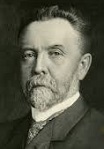
In 1897 Am. geologist George Perkins Merrill (1854-1929) defines the term Regolith (Gr. "rhegos" + "lithos" = blanket + rock) for the loose superficial deposits on the surface of Earth, Moon, Mars, etc. covering solid rock.

In 1906 Am. geologist Clarence Edward Dutton (1841-1912) pub. a theory, based on studies in Hawaii, Calif., and Ore. that volcanism is caused by radioactivity.

In 1912 German geophysicist Alfred Lothar Wegener (1880-1930) pub. The Origin of Continents and Oceans (Die Entstehung der Kontinente und Ozeane), which proposes the theories of plate tectonics and continental drift, and the supercontinent Pangaea - Brazil fits neatly into the Gulf of Guinea in W Africa, so post fit ergo propter fit?
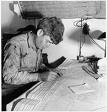
In 1960 the first Vetlesen Prize is awarded by the Lamont-Doherty Earth Observatory of Columbia U. and the G. Unger Vetlesen Foundation to Am. geophysicist-oceanographer William Maurice "Doc" Ewing (1906-74), going on to become the Nobel Prize for geology.



In 1966 Am. geophysicists Allan Verne Cox (1926-87), Richard Doell (1923-2008), and G. Brent Dalrymple (1937-) of Stanford U. determine that the Earth's magnetic field has undergone periodic reversals - it means it doesn't matter where you start, it all comes together, it all falls apart?

In 1967 English geophysicist Dan Peter McKenzie (1942-) and R.L. "Bob" Parker pub. a paper proposing the concept of Plate Tectonics, making it mathematically precise using Euler's Rotation (Fixed Point) Theorem, later breaing the Earth's lithosphere into seven plates: Africa, North Am., South Am., Eurasian, Australian, Antarctic, and Pacific.
On Dec. 27, 1984 Am. geologist Roberta "Robbie" Score finds the Martian meteorite labelled Allan Hills (ALH) 84001 while snowmobiling in the Antarctic; later it is claimed that fossil evidence of Martian life is found in it.